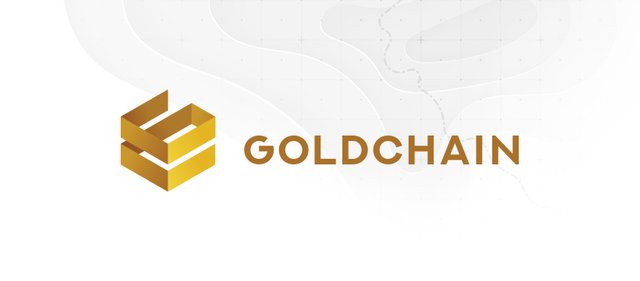
In conflict areas, the lives of mine workers are put in harm’s way every day. They often suffer serious human rights abuse, such as enslavement, physical assault, and exposure to toxic chemicals [1]. In the eastern Democratic Republic of Congo, conflict gold provides a significant source of income to armed actors, whose troops abuse civilians. These armed militias and groups trade gold for weapons and ammunition, and profit from the conflict minerals [2].
To collect enough gold for one 0.33-ounce 18-karat ring, gold mining companies generate as much as 20 tons of waste rock and ore. If not properly managed and discarded, cyanide, mercury, and other toxic materials can pollute local water sources [1]. There is currently no mechanism to link final consumers to upstream production of minerals and metals. Some of the reasons include geographical distance, complexity, and long product chains [3]. So how can consumers be assured that the precious metals they buy do not contribute to human-rights abuse or environmental abuse? Goldchain is working to offer a unique solution to these problems.
Goldchain is a decentralized blockchain-connected platform that works with mining companies to track provenance of precious metals in the supply chain. The Goldchain ecosystem offers benefits over using a centralized supply chain database in that it provides a full audit trail of data in the supply chain shared between participants on the network. Immutability of its data is one of the advantages of Goldchain’s blockchain distributed system in that all transactions are timestamped, tamper-proof and available on a distributed ledger for secure, trusted asset and data transfer between parties.
The Goldchain platform uses the EOS blockchain to provide a complete chain of custody for precious metals in the supply chain. The provenance of metals within the mining supply chain are provided by tracking shipments with Internet of Things (IoT) devices and sensors connected to the Internet and blockchain — a continuous interconnected supply chain. IoT-based and blockchain-connected tamper-proof locks are placed on shipment containers, essentially forming seals for containers carrying raw materials, ores, and ingots, such that unauthorized access or tampering alerts the network and broadcasts a transaction event on the blockchain ledger. Inventory on an item-level can be verified with location-based services to enable tracking in real time along the chain of custody. Blockchain, a decentralized database, together with IoT and automation provides a system to securely read and write data on an immutable supply chain ledger [4].
The smart contracts that Goldchain employ offer disintermediation in the supply chain and provide peer-to-peer interactions based on digital signatures that can be trusted. Mining companies leveraging this technology may lower losses from counterfeit and grey market trading since all physical goods in the supply chain can be fixed with identifiable, cryptographically-secured digital identities for the purpose of authentication. Goldchain’s protocols also have the potential to reduce paperwork and administrative costs.
Goldchain offers mining companies an ecosystem and micropayment network made up of IoT devices communicating over a Machine-to-Machine network to provide tracking of metal assets — the foundation of a robust and efficient, fully autonomous and decentralized metals supply chain. Such systems have the potential to replace existing centralized server-client model systems with ones that are completely decentralized and trustless.
The mine of the future dominates the landscape of the mining industry, with digitization and automation more important than ever. Successful mining companies will incorporate the latest applications of IoT, blockchain, and tokenization of assets and will include the embedding of digital and innovative thinking into their business strategy. Successful mining companies will be mindful of the disruptive impact of technology on their infrastructure investment decisions [5].
References:
[1] A. Herro, “Gold: A Raw Deal for Indigenous Peoples,” WorldWatch Institue, 5 April 2019. [Online]. Available: http://www.worldwatch.org/node/3972. [Accessed 5 April 2019].
[2] F. Bafilemba and S. Lezhnev, “Congo’s Conflict Gold Rush,” enough: The Project to end genocide and crimes against humanity, 2015.
[3] S. B. Young, “Responsible sourcing of metals: certification approaches for conflict minerals and conflict-free metals,” International Journal of Life Cycle Assessment, vol. 23, no. 7, p. 1429–1447, 2015.
[4] H. M. Kim and M. . Laskowski, “Towards an Ontology-Driven Blockchain Design for Supply Chain Provenance,” International Journal of Intelligent Systems in Accounting, Finance & Management, vol. 25, no. 1, pp. 18–27, 2018.
[5] Deloitte Touche Tohmatsu Limited., “Tracking the Trends 2018,” Deloitte Global, 2018.
For more info contact [email protected] and follow us on the channels below.
Twitter: https://www.twitter.com/goldchaincrypto
Medium: https://medium.com/@goldchaincrypto
Steemit: https://steemit.com/@goldchaincrypto
Reddit: https://www.reddit.com/user/goldchaincrypto
Telegram: https://t.me/Goldchaincrypto
LinkedIn: https://www.linkedin.com/company/goldchaincrypto
Facebook: https://www.facebook.com/Goldchaincrypto-367056060814758/